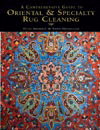Cleaning and Sanitizing Hard Surfaces

Before you begin, be sure to understand what it means to disinfect or to sanitize.
Photo courtesy Mannington Commercial.
Before you begin, be sure to understand what it means to disinfect or to sanitize. A disinfectant is intended to free you from infection by destroying harmful microorganisms. To sanitize by cleaning or sterilizing is to reduce the occurrence of bacteria, viruses and fungi. Make sure to choose a product that does what you expect and is recommended for hard surfaces.
Once you’ve selected the proper products, Mannington Commercial recommends the following basic processes:
- Be sure to clean and remove soil from the surface. Then disinfect/sanitize the surface with the appropriate chemical.
- Use neutral disinfectants/sanitizers that have pH around 7.
- Some disinfectants/sanitizers intentionally have a pH that is higher or lower than 7. Follow the manufacturer’s guidelines if a rinsing step is required.
- Read the product label carefully regarding the recommended dwell or contact time on the surface. Some products need time to activate.
- Follow the dilution rate (how much chemical to use per gallon of water) to achieve desired results. This protects against an adverse chemical response.
- Follow chemical label instructions. The chemical manufacturer must follow strict guidelines that have been validated by testing verification to make the disinfecting/sanitizing claims on the label; they are in place for a reason.
- Do not create your own special formulation—it could be dangerous.
- If either the dilution or the dwell time steps are not followed exactly as instructed, your cleaning process will fall short of what you are trying to achieve.
- Remember, once the surface is compromised by touching, walking on or any other type of contact, the surface is no longer considered to be disinfected. Take this into consideration when creating your protocol schedule and plan accordingly.
Source: Mannington Commercial
Looking for a reprint of this article?
From high-res PDFs to custom plaques, order your copy today!







.jpg?t=1690771780)